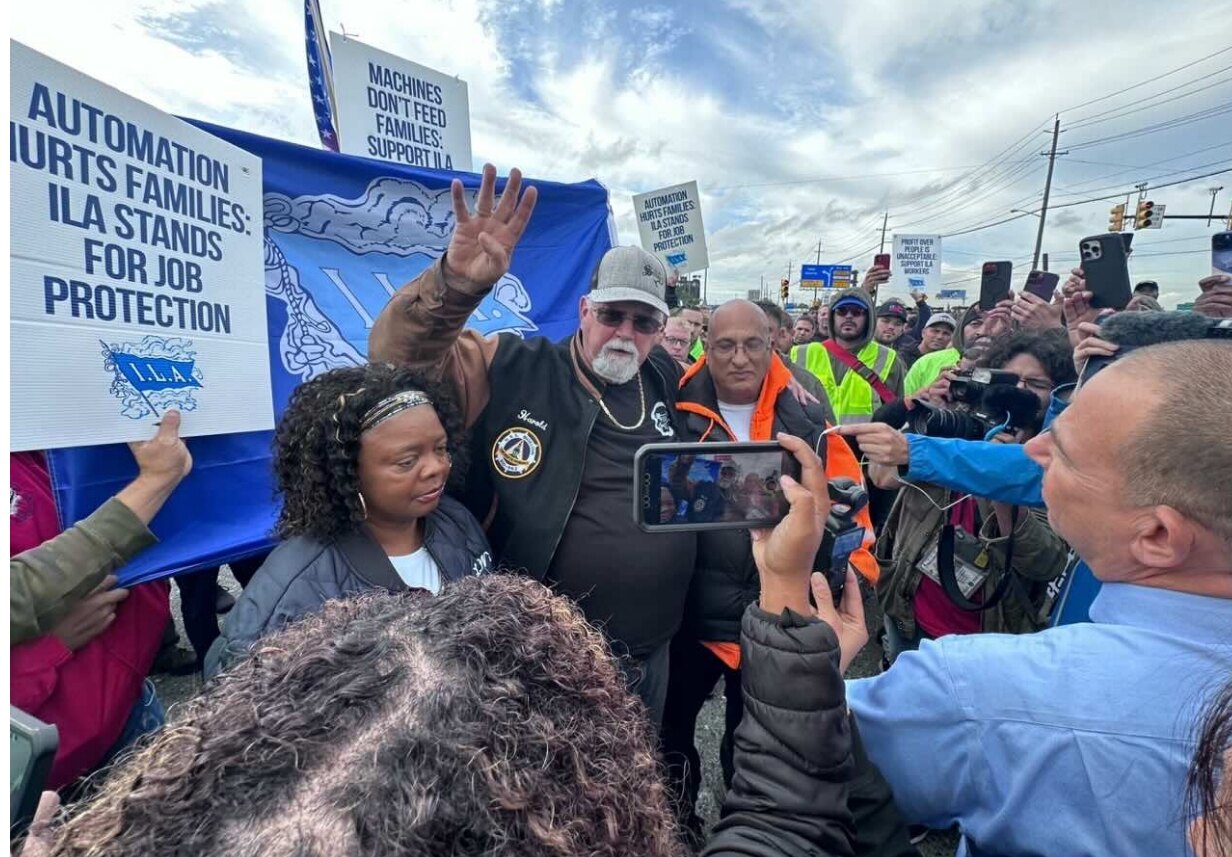In a move reminiscent of the labor disputes of the 1970s, approximately 45,000 members of the International Longshoremen’s Association (ILA) began a strike at 12:01 a.m. ET on Tuesday, October 1, 2024. This work stoppage, affecting major ports from Maine to Texas, marks the first large-scale eastern dockworker strike since 1977. The strike affects over 30 major ports, including crucial hubs like New York/ New Jersey, Boston, Philadelphia, and Houston, which collectively handle between 43% and 49% of all U.S. imports, representing billions of dollars in monthly trade. New York Governor Kathy Hochul reported that an estimated 100,000 shipping containers are “literally in limbo” at the Port of New York and New Jersey alone, threatening to disrupt supply chains and potentially impact consumer prices if the strike persists
How would a port strike on the East Coast impact consumers?
At the heart of the dispute are wages and automation concerns. ILA President Harold Daggett articulated the union’s demands, including a $5 per hour wage increase for each year of a six-year contract, a complete ban on automation at the ports, and the allocation of all container royalties to ILA members. “When we fight, we win,” ILWU President Olvera asserted. “Brothers and Sisters, on behalf of all the members of the ILWU, from Alaska to San Diego, British Columbia, and most definitely from the Islands of Hawaii, the ILWU stand with the ILA. We are family- WE ARE ONE! Let one employer stand between us and see what happens. Let one Port Authority stand between us and see what happens. Let one elected official stand between the working men and women of the docks in North America and see what happens!”
The United States Maritime Alliance (USMX), representing port operators and shipping lines, countered with an offer that included nearly a 50% wage increase over six years, tripled employer contributions to employee retirement plans, strengthened healthcare options, and retention of current contract language on automation. Despite this offer, the gulf between the two parties remains wide.
Similar Posts
The potential economic impact of a prolonged strike is substantial. J.P. Morgan estimates that a complete shutdown of East and Gulf Coast ports could cost the U.S. economy $5 billion per day. Various industries are bracing for disruptions. Noushin Shamsili, CEO of Nuco Logistics, warns in a statement made to CNBC that the strike coincides with a critical inventory replenishment period for pharmaceuticals, highlighting the potential for shortages in medical supplies and raw materials for drug manufacturing, as reported by Lori Ann LaRocco. Steve Lamar, CEO of the American Apparel & Footwear Association, reported that in 2023, East and Gulf Coast ports accounted for 53% of all U.S. apparel, footwear, and accessories imports, valued at over $92 billion. The American Farm Bureau Federation reports that over 3.8 million metric tons of bananas, representing about 75% of the nation’s supply, come through the ILA handled ports. Other perishables like cherries, as well as imported wine, beer, and spirits, also face potential shortages.
This strike occurs against a backdrop of recent supply chain disruptions and labor actions. The shipping industry saw record profits during the pandemic, with analyst John McCown estimating industry-wide profits of over $400 billion from 2020 to 2023. The timing of the strike, just weeks before a major election, adds a political dimension to the dispute. President Joe Biden has stated he does not intend to invoke the Taft-Hartley Act to end the strike, emphasizing his belief in collective bargaining.
If the strike extends beyond a few weeks, experts warn of significant supply chain snarls that could persist into 2025. Jay Dhokia, founder of Pro3PL, cautioned, “If the strikes go ahead, they will cause enormous delays across the supply chain, a ripple effect which will no doubt roll into 2025 and cause chaos across the industry.” The dispute also touches on broader issues of automation and job security in an increasingly technological world. The outcome of this strike could set precedents for how other industries navigate similar challenges in the future.
As picket lines form at ports along the Eastern Seaboard and Gulf Coast, the eyes of the nation are on the negotiations between the ILA and USMX. The resolution of this dispute will have far-reaching implications for the U.S. economy, labor relations, and the future of work in an age of increasing automation. With both sides entrenched in their positions, the coming days and weeks will be crucial in determining whether a compromise can be reached or if the economic impact of the strike will force external intervention.

















